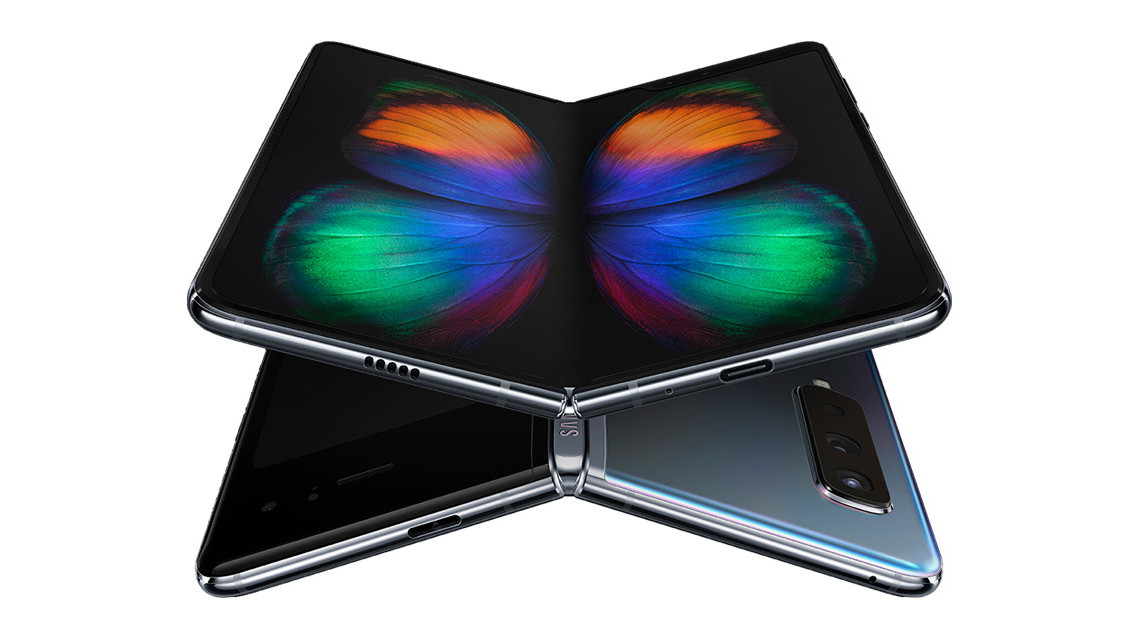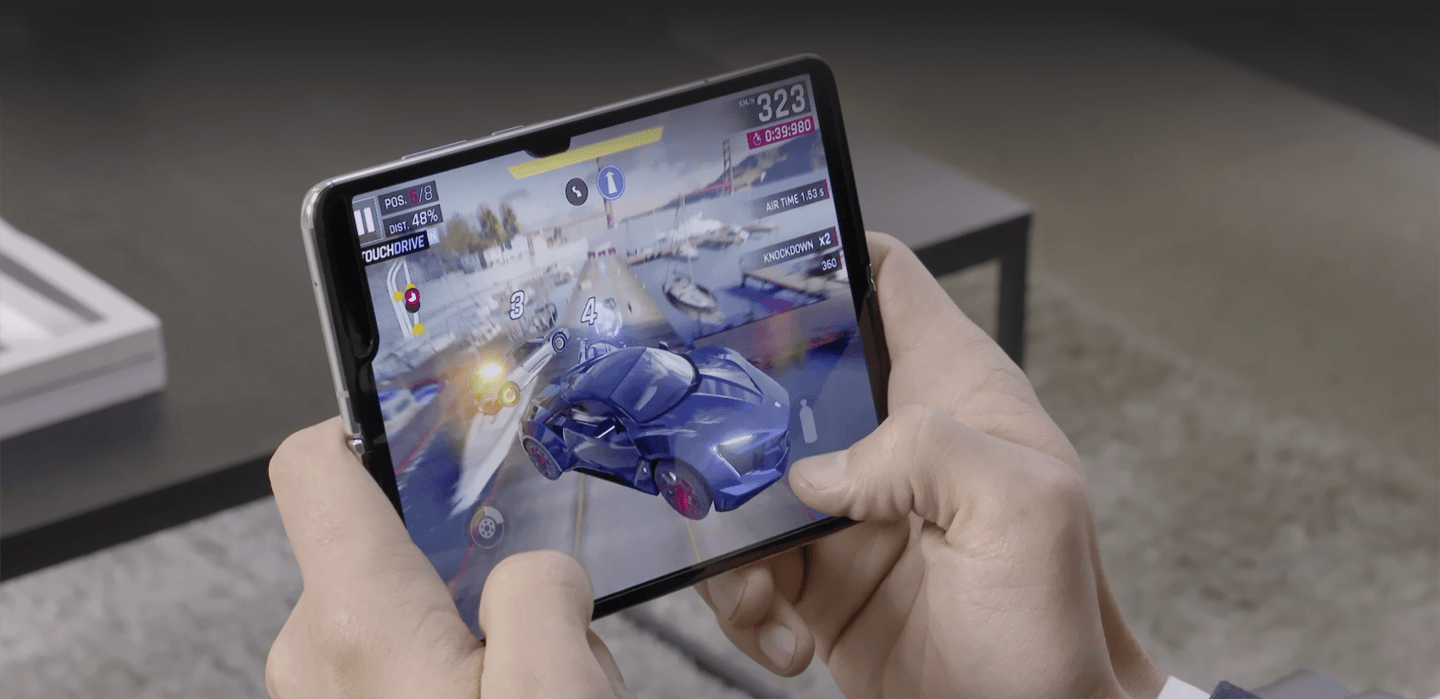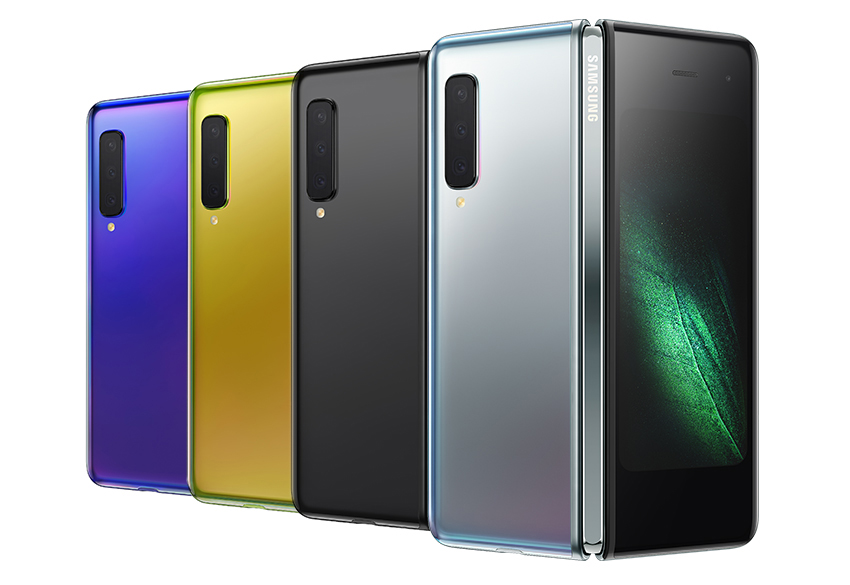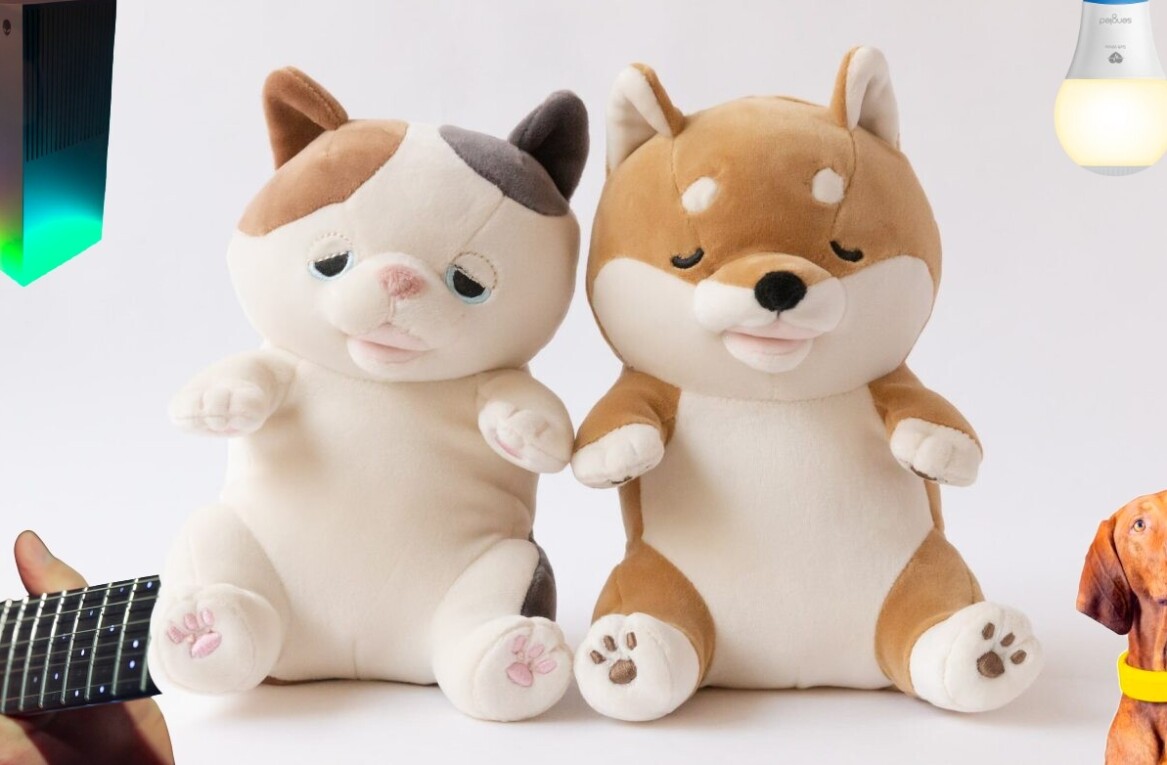
It’s been eight years since Samsung first debuted a prototype of a foldable smartphone, and the company finally revealed its finished product, the Galaxy Fold, at its Unpacked event last night. It looks beautiful, packs top-shelf hardware components, and some clever ideas to create a compelling dual-display experience – but you won’t be able to get your hands on it until the end of April.
That means you have a couple of months to think about whether you want to spend roughly $2,000 on this baby. We thought it might be helpful to list some of the pros and cons of foldable devices to help you decide, as well as discuss what we can look forward to past this milestone in hardware design and development. Let’s dive in.
The case for #TeamFold
First off, foldable phones afford you a large display in a smaller form factor than a tablet. That’s great for when you want a more immersive experience while watching videos, playing games, and reading books and articles. Plus, being able to simply flip your phone open to reveal a sizable screen seems kinda magical. If you’re on the road a lot, this makes for a great portable entertainment device.

A big display also allows for more flexible multi-tasking. On stage with the Fold, Samsung demonstrated how you could watch a YouTube video, chat with a friend on WhatsApp, and look up flight tickets in three separate windows.

Android has supported this functionality for a while now, but it seems like it’ll come in a lot more handy on a wide tablet-sized screen than a standard phone. Hopefully, this will also spur the development of better multi-tasking features on the platform, and more innovation from software studios to take advantage of said features. And who knows, maybe that will revive interest in Android tablets at some point in the future. I’m nothing if not optimistic.
Next, these devices are going to be bigger and thicker than traditional phones, and that means manufacturers can jam more hardware components into them.

In the case of the Galaxy Fold, Samsung managed to fit large dual batteries (that work as a unified power source with a capacity of 4,380mAh), and six cameras to allow for flexibility while shooting pictures or capturing video, in both open and closed modes. As designs for foldables evolve, you can expect to see brands add more features that they simply didn’t have room for before.
Lastly, the arrival of foldable devices (shoutout to Chinese brand Royole for being first out of the gate with a flexible display for this) could herald a new era of design thinking in the world of smartphones. For the past several years, all we’ve seen here are black slabs with little to distinguish them from each other.
Back in the days of feature phones, we had plenty of variety to choose from in terms of form factors, styling, materials, finishes, interfaces, and unique features. We may not see that diverse a range of designs in smartphones anytime soon, but hopefully, we’ll start to move in that direction again from here on out.
Why I’m not down with foldables just yet
I’m for all for novel devices that push the envelope, and I appreciate that the likes of Samsung, Royole and others are trying new things with foldable devices. That said, I have a few reservations about this just now.
For the next year or two, these devices are going to cost you a pretty penny; Royole’s rough-around-the-edges Flexpai costs something like $1,300, and Samsung wants $1,980 for its Galaxy Fold. At those price points, they’ll likely only appeal to early adopters who are truly excited about the technology, and fall out of reach for folks who don’t want to spend what they would on a high-end laptop.
There’s also the other early adopter conundrum to think about: while you might be excited to hop on this bandwagon ahead of the rest, you’ll also likely encounter teething troubles that are par for the course with new designs and form factors.
Samsung says it’s engineered its Galaxy Fold software to seamlessly transition your app activity between screens when you switch from the closed to open display and back. But it remains to be seen how well this works across all apps. The company noted that it’ll be easy enough for developers to build in support for the Fold into their apps.
Next, the foldable form factor has one major drawback: device thickness. I hate when stuff juts out of my pockets, and I’m certain I’m not alone in this. From the looks of things, the current crop of foldable phones require a fair bit more space than standard phones, and will ruin your silhouette if you’re wearing a fitted pair of pants. I haven’t exactly been looking forward to bulkier personal gadgets than the devices I’ve previously owned, so this is a bit of a downer.

Lastly, foldables might be capable of multi-tasking, but they may not be great for productivity. As things stand, the larger displays on these devices appear to be good for watching videos and reading, but they’re not replacing your tablet or laptop’s ability to help you get some real work done.
If you’ve got an iPad with a keyboard cover, for example, you could realistically leave your laptop at home, and write, create presentations, and work on spreadsheets fairly efficiently. The foldables we’ve seen thus far aren’t designed for this, and as such, their limited utility may make it hard for some people to justify their high prices.
What’s the verdict?
If you’re into collecting memorable and groundbreaking devices, it seems like you won’t be disappointed with Samsung’s offering – or perhaps the upcoming models from Xiaomi and Huawei that are expected later this year.
It’s hard to say right now whether foldables are here to stay, or if they’ll just be a flash in the pan. But history has taught us that it’s foolish to trash a new innovation early in the game. For reference, look at the success stories of the iPad, and even the Galaxy Note (a large phone in a sea of 4-inchers, that’s now set the standard for handset sizes).
We’ll have to wait and see how the first lot of these devices are received, and how manufacturers adapt to customers’ preferences with future iterations.
If you’re considering a foldable as a daily driver, maybe wait a bit until the price is more reasonable and you have more options to choose from.
Read all about Samsung’s Galaxy announcements here, and make sure to check out our TNW Conference 2019 page – we have some exciting speakers from Samsung’s investing arm, Next, coming over.
Get the TNW newsletter
Get the most important tech news in your inbox each week.




